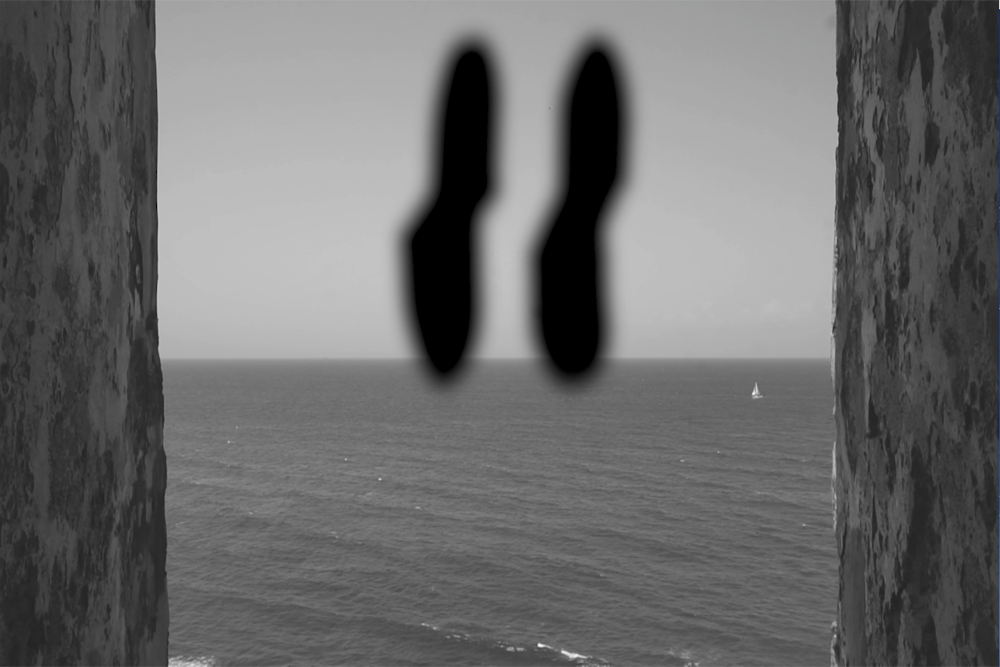Video-essay, 7’ 44’’, HD video (loop).
Commissioned by CILAS – the Center for Iberian and Latin American Studies (CILAS). The University of California San Diego (U.S.)
Turbonada is a video-essay whose narrative interrelates infrastructure and material heritage through the examination of three case studies located in Puerto Rico: the San Cristóbal castle, the fortress of San Felipe del Morro and the Arecibo radio telescope. All of these cases are nowadays touted as either historical or scientific patrimonial elements, which seems to maintain the colonial gesture as a grandiloquent endeavor, one that is reinforced by the scale of its architectures.
The piece effectuates a superposition or montage between the remnants of Spanish military architectures with more recent colonial milestones, such as the U.S. radio telescope, in which transitions and superimposition highlight the plasticity of these places and their shared condition as project and memory.
At the same time, the video introduces deliberate visual anomalies, alluding to the shape of colobomas (a keyhole-like deformation in one of the structures of the eye), being also an unintentional reference to Richard Artschwager’s blps series. Either case, the term ‘anomaly’ was used also by the U.S. Navy for designating archaeological remnants without identification.
The footage is the result of on-site careful observation and bodily contextualization; they insist on the materiality that still exists, the resistance of these infrastructures to be used (one can only visit them), and the survival of their ideologies as if were dirt, passing from one place to the other, spreading their meaning instantly, under the logic of montage. Somehow, the video’s title points to its own internal logic, for a turbonada is thus a storm that does not achieve the status of a hurricane, yet it maintains intensely the expectation of that absence.








